#atelier kolliner
Text
Dancing cacti by Grete Kolliner

Grete Kolliner (1892-1933) ~ Manon Chaufour und Otto Werberg als Tanzkakteen, um 1931 (detail)

Atelier Kolliner ~ Manon Chaufour & Otto Werberg als Tanzkakteen (dancing cacti), um 1931 | src Dorotheum
Proveniennz: Aus dem Nachlass Hedi Pfundmayr
view more on wordPress
#atelier kolliner#Grete Kolliner#cactae#cacti#cactus#cactus costume#dance costume#tanzkostum#dance pose#tanzpose#dancer#Tänzerin#danseuse#1930s#danzatrice#bailarina#dancing cacti#kaktus#Manon Chaufour#matching costumes#otto werberg#role portrait#Rollenporträt#Rollenfoto#tanzkakteen#tanzpaar#women artists#women photographers
104 notes
·
View notes
Text

Cardi B at Vanity Fair’s Oscars Party (2024)
#cardi b#vanity fair oscar party#vanity fair#academy awards 2024#black girl magic#rapper#beauty#kollin carter#style#custom#versace#donatella versace#atelier versace#fashion#black beauty#afro latina#female rapper#academy awards#pro-royalty
123 notes
·
View notes
Text
Black Unison — Voices of Stylists – WWD
https://pmcwwd.files.wordpress.com/2020/06/stylist-featured.jpg?w=640&h=415&crop=1
The entire system has been built for Black people to fail. The foundations of both Hollywood and the fashion industry are built on pillars of white privilege and solidarity. These are institutions that were not established with the success of Black people in mind and although several glass ceilings of racial injustices and discrimination have been shattered in the last five years. In an interview with three Black stylists, I ask questions that make one thing very apparent: As stylist Jason Bolden asserts, “This business is very clear: it has always been based on the 1 percent of white women and it leans directly into that. The people who are the gatekeepers, they only see people who look like them and they’re only interested in turning those types of clients over to people who look like them.”
Conversations centered around systemic racism can be uncomfortable because they challenge the morals and values of white people, shrouding them in shame and guilt, as they realize their privilege has come at the expense of the marginalization of minorities. It’s for this reason that several Black creatives declined a request from WWD several weeks ago to participate in an article addressing the issues of race within the entertainment and fashion industries. In solidarity, we decided that if we were going to tell our story, it had to be told solely by a Black journalist and on this occasion someone with shared experiences having worked in the industry as a stylist as well. “Our story has always been told by someone who doesn’t look like us,” says Bolden. “This is the perfect opportunity to share and experience it through a voice, and the face of people who look like us. It’s rare. It’s important.”
Bolden, Kollin Carter and Calvin Opaleye are Black stylists, each of whom has carved out an accomplished career in an industry where the role of the stylist in both Hollywood and fashion is played most often by a white woman. What they all share in common is that their success has come as a result of working with women of color. “My career was started and will end with women of color because they saw me, they chose me and they made me an option for everything,” says Bolden.
Carter, who has skyrocketed to fame, styles Cardi B, and together the two have shifted the culture of fashion, transforming Cardi into a fashion icon in less than four years. However, working with Cardi has somewhat pigeonholed Carter, who has struggled to diversify his client list because, as he says, “My big break was with an artist and from that point on, I almost got, kind of cornered into a room or a space where it was just like, this is what you do and this is what you can do.” Carter continues, “But then at the same time, you have examples like Karla Welch and Rob [Zangardi] and Mariel [Haenn] who have the capability to style musicians and someone for a major red carpet.” They have been given the license by publicists and managers to style a different set of people, for which a different set of rules applies.
Publicists, who are largely responsible for connecting talent with stylists, are a big reason why Black creatives are not being offered the same opportunities as their white counterparts. “They don’t equate Black with chic. They don’t equate Black with smart. They don’t equate Black with relationships,” says Bolden, that is unless you’re British like Opaleye, who is half British and half Nigerian. According to Opaleye, “The closer to the white ideal standard of beauty is the closest you could get toward whatever this idea of success [is] we all have.” His proximity to whiteness is both his mixed heritage and British accent, which Bolden believes is “viewed as better or smarter.” However, Opaleye has built a career that takes inspiration from his culture and Blackness. “It’s paramount that I work with Black makeup artists, Black hairstylists, Black women, Black everything…we’re currently creating a Black Renaissance,” Opaleye asserts. This Black Renaissance, however, is still not completely palatable to Hollywood and the fashion industry.
Since 2011, a list of Hollywood’s Most Powerful 25 Stylists has been published by The Hollywood Reporter, produced by Carol McColgin and her team, all of whom are predominantly white. This discriminatory list is the filter most publicists use to decide which stylists they will partner their top-tier talent with for major award season campaigns and blockbuster films of the year. Over the last decade, 235 positions have been available and only 16, three belonging to Bolden, have been filled by Black creatives — that’s a 7 percent representation. With this journalistic model acting as an unchecked gatekeeper, it becomes impossible to break the cycle and dismantle narratives of white privilege and solidarity.
Another primarily white list that is largely responsible for the disassociation of Blackness with luxury is the “designer target list,” which is a curated list of talent that p.r.s deem worthy of being associated with luxury fashion houses. There is a stirring sentiment of tokenism within these lists, which normally only allot space to be occupied by a few “magical negroes,” as James Baldwin describes in his text “The Fire Next Time.” Most often, only Black talent that has been nominated or was a part of productions that make it to the pinnacle of success in Hollywood, the Academy Awards, are knighted with this honor. However, we all agree that luxury designers Marc Jacobs and Pierpaolo Piccioli at Valentino have been pushing the agenda of diversity and inclusion for a long time and have made Black talent and creatives an authentic part of their brands’ DNA. As Carter so eloquently stated, “I want fashion houses to realize inclusion based solely on your profit of a dollar or your fear of being viewed as racist is not inclusion at all — it’s corruption.”
The odds are against us and it’s imperative that Black talent who shatter the glass ceilings and get to the top send the elevator back down. Bolden says, “It is a Black person’s mission to make sure that when their teams present them these ideas of what they should do and who they should work with, they should be asking, where are the people of color on this list?” Carter continues, “It is Black talents’ duty to take on their own because you have your white counterparts who are working with these white actresses, and a lot of the Black talent hire these white counterparts as well and it ends up not being progressive at all.”
These conversations, as well as an accompanying video with Bolden, Carter and Opaleye on WWD.com are meant to be transformative and offer immediate viable solutions. “We need Black people working in the atelier, we need Black people working in the p.r., we need Black people working,” says Opaleye, who also feels that “white people need to call out racism wherever they see it, address it, get uncomfortable with it, talk about it and dismantle it.”
Black creatives aren’t asking for special treatment. We’re asking for fairness, for justice, for safety and for equity.
Source link
قالب وردپرس
from World Wide News https://ift.tt/2CTGXEO
0 notes
Text
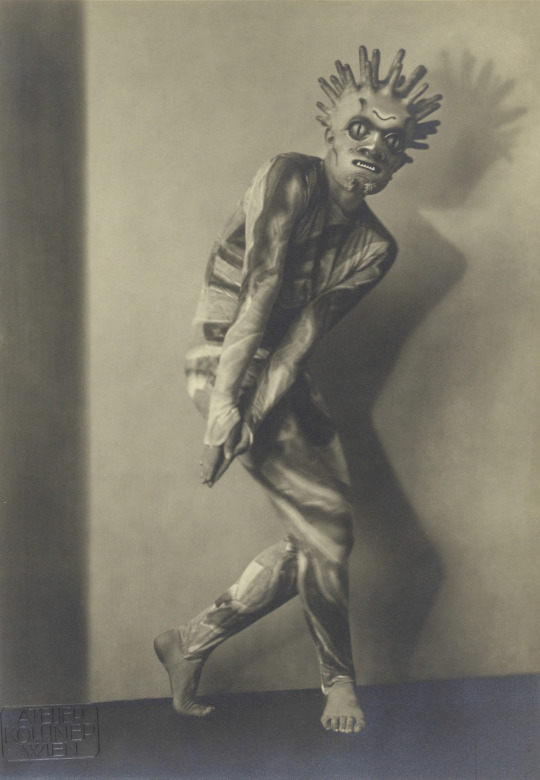
Atelier Kolliner (Grete Kolliner) :: Otto Werberg in einem Maskentanz, um 1930. | Wien Museum Online Sammlung 57624_97_1
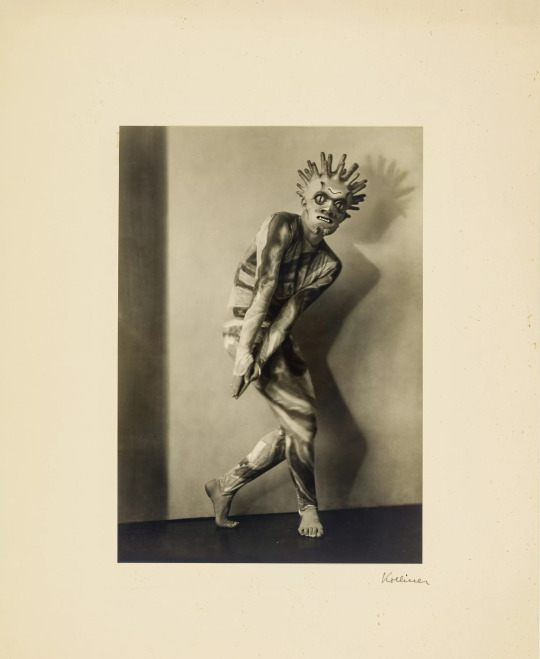
Atelier Kolliner (Grete Kolliner) :: Otto Werberg in einem Maskentanz, um 1930. | Wien Museum Online Sammlung 57624_97_2
#grete kolliner#otto werberg#dance pose#role portrait#tanzer#danseur#dancer#maskentanz#mask dance#1930s#1920s#atelier kolliner#wien#portrait#vienna#full length portrait#tanzpose#tanzkostum#dance costume
77 notes
·
View notes
Text

Grete Kolliner :: Kirchenfenster von Hedy Pfundmayr mit Otto Werberg und Lily Calderon-Spitz, Wien 1930. © Theatermuseum Wien | src Wien Museum Magazin
View on WordPress
#grete kolliner#atelier kolliner#dance pose#lily calderon spitz#lily calderon#otto werberg#dance#Tanz#danseuse#danse#danza#dansa#dancer#Tänzerin#danzatrice#danseur#dance costume#tanzer#kirchenfenster#tanzkostum#tanzpose#1930s#women artists#women photographers#tanzpaar#hedi pfundmayr#hedy pfundmayr#wien#wien museum
86 notes
·
View notes
Text

Atelier K. Kolliner (Wien) :: Mira Cirul (sic) in Rustic Dance, 1925. Music by N. Medtner and costumes by G. Kirsta. Artist’s original print. PKh. Second “Art of Movement” exhibition, 1926. | src Nicoletta Misler
View on WordPress
#mila cirul#atelier kolliner#costume design#rustic dance#dance costume#dance pose#danseuse#G. Kirsta#k. kolliner#mira cirul#tanzerin#tanzpose#the art of movement#1920s#dancer#danse
65 notes
·
View notes
Photo

Atelier Kolliner (Wien) :: R. Chladek dancing the Präludium from A. Corelli’s Klagelied at the Hellerau-Laxenburg School. Stamped on the photograph: “Atelier Kolliner Wien”. Catalogue of the fourth “Art of Movement” exhibition, 1928, within Nos. 451-452 or 522-23. PKh. | src Nicoletta Misler’s The Russian Art of Movement
View on WordPress
#atelier kolliner#rosalia chladek#dancer#dance pose#the art of movement#the russian art of movement#1920s#russian art of movement#art of movement#k. kolliner#tanzpose#tanzerin#dance costume#hellerau dance school#Tänzerin#hellerau laxenburg#danseuse#danzatrice#expressionist dancer#Nicoletta Misler#rozalia hladek#tancerka
212 notes
·
View notes
Photo

Mila Cirul by K. Kolliner
Atelier Kolliner :: Mira (Mila) Cirul in Polshinelle Tänze. Gisa Geert Group. Collection of Pavel Khoroshilov, Moscow. | src Het Nieuwe Instituut: Space Embodied. The Russian Art of Movement 1920-1930
#1920s#barefoot#cymbal#cymbals#dance costume#dance pose#dancer#k. kolliner#mila cirul#gisa geert tanzgruppe#mira cirul#polshinelle dances#polshinelle tanze#gisa geert#russian art of movement#russian dance#atelier kolliner#bending backwards
150 notes
·
View notes
Photo



Grete Kolliner ~ Mila Cirul und Hedy Pfundmayr in Olympiade zu zweit / Olympics for Two, wearing costumes by Georg Kirsta, 1928 | src Photoinstitut Bonartes & getty images
The second image (middle) ─by Grete Kolliner too─ was taken as part of a dance evening on November 29, 1928 in the Vienna Konzerthaus. The two dancers ─Mila Cirul and Hedy Pfundmayr─ presented a program, the finale of which was the original duet Olympics for Two, of which we were left with a small impression in the form of this postcard, which was probably intended to be used as an autograph card or collector's photo. | src Poskartenarchiv ~ Bonartes
more [+++] by this photographer
#grete kolliner#mila cirul#hedy pfundmayr#lustig#funny#humour#1920s art#1920s#danseuses#bailarina#dance costume#olympics#olympiade zu zweit#Olympics for two#race#olympic games#atelier kolliner#costume design#wien#tanzerinnen#danzatrici#1920s wien#dancers#georg kirsta#tanzkostum#bonartes
121 notes
·
View notes
Text
The New Age Dapper Dans: Rich Godxx, Exclusive Game, and Sir Baba Jagne Use Monogram Fendi, Gucci, and Louis Vuitton Prints to Create Fashion Forward Looks (Not Available in Stores)
Dapper Dan created a booming business in the 80’s and 90’s by providing rappers, hustlers, and athletes with monogrammed luxury pieces they couldn’t find in 5th Avenue stores like Gucci, Fendi, and Louis Vuitton.

The storied Italian and French fashion houses had the luxury game and monogram prints on lock, but the swag was something Dan created in Harlem. Rappers had a particular style that called for baggy pants, tracksuits, and leather jackets that those brands simply didn’t have. So Dan made them, replicating the monogram prints in his shop using high quality ink, then selling his custom pieces to those who wouldn’t blush at the price tag.

We all know the story: Dan was shut down due to copyright infringement, but later experienced a revival when Gucci copied his design. Now, with critically acclaimed official collaborations under his belt, the rest is history.
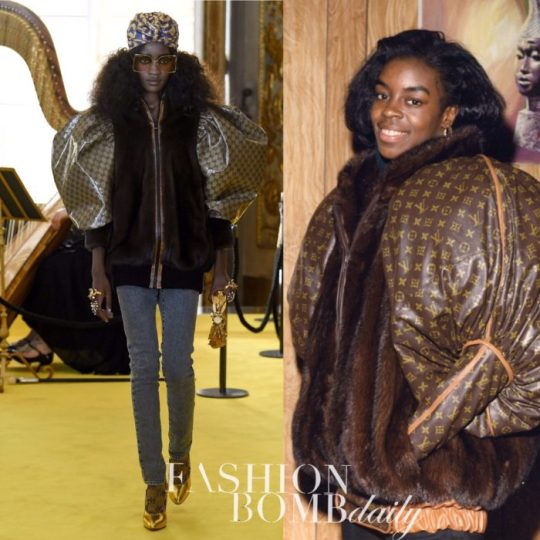

It comes as no surprise that Dan would have inspired many designers of this generation, whose customers similarly love the look of monogrammed pieces, but can’t seem to find what they need on the racks of luxury ateliers. Many wondered where they could buy Monica’s Verzuz battle Fendi outfit:

Newsflash: It’s not available in stores. Monica’s Fendi look was the brainchild of LA based designer Sir Baba Jagne and stylist Kollin Carter, who chopped a Fendi Trench and skirt (available in stores) to create her one-of-one jacket, corset, and hat.

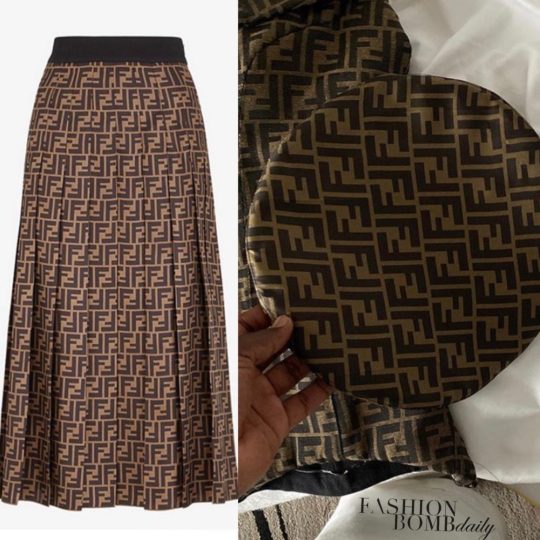
Kollin and Baba Jagne also collaborated to create this Louis Vuitton look on Cardi B, converting two $1,620 Louis Vuitton skirts into a set:


The new age Dapper Dan’s are no longer recreating the monograms in their ateliers, but rather buying items from stores, and remixing.
Exclusive Game out of Atlanta ( whose clients include Meek Mill, Rick Ross, Future, and Money Bagg Yo), is a master at his craft, outfitting style stars in custom looks using scarves and pieces from the brand to create more hip hop inspired ensembles.



While he has been able to run his lucrative business without limits, and even gets invited to Louis Vuitton shows in Paris…
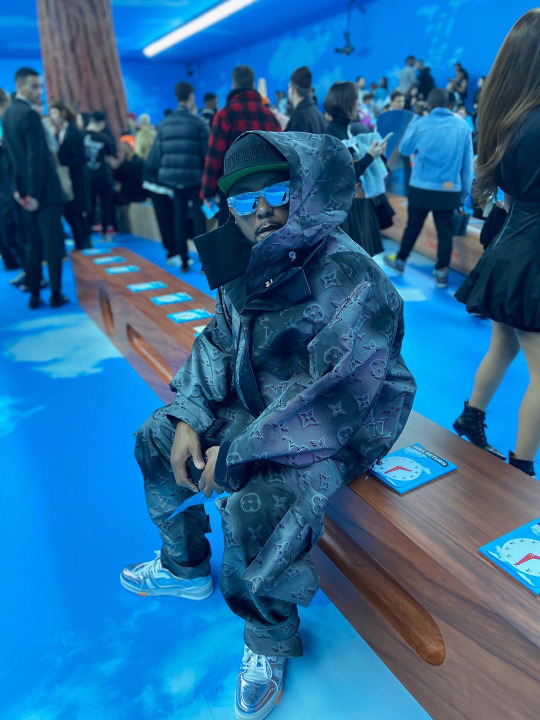
… his Instagram @ExclusiveGame was recently disabled after Goyard caught wind of a bucket hat he created for Future.
View this post on Instagram
A post shared by FashionBombMen (@fashionbombmen) on Aug 5, 2020 at 2:35pm PDT
While many brands seem to celebrate Exclusive Game’s creativity, apparently Goyard is not one of them. He has been forced to start again on Instagram under the handle @ ExclusiveGameATL.

Rich God XX is another menswear designer who offers his creative takes on garments using monogram fabrics. His clients include Fabolous, Lil Durk, and Gunna.
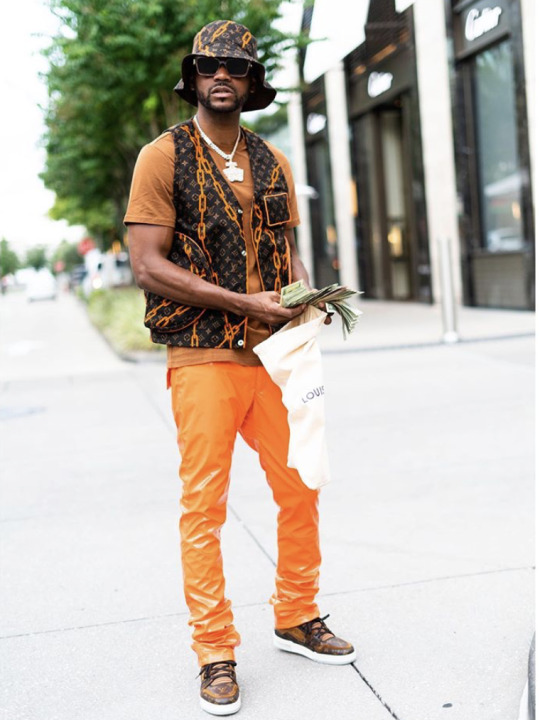
Unlike the 80’s and 90’s, rappers and fashionistas have access and can walk into any luxury store–and buy anything they like! But what they still can’t seem to find, apparently, are stylish items that fit their tastes.

Louis Vuitton hired Virgil Abloh as their menswear creative director, Misa Hylton is global fashion director of MCM, and Gucci collaborated with Dapper Dan.

Perhaps it’s time for luxury houses to embrace a few of these new Street couturiers, who are creating loads of hot pieces for their well heeled clients.

What say you?
The New Age Dapper Dans: Rich Godxx, Exclusive Game, and Sir Baba Jagne Use Monogram Fendi, Gucci, and Louis Vuitton Prints to Create Fashion Forward Looks (Not Available in Stores) published first on https://normaltimepiecesshop.tumblr.com/
The New Age Dapper Dans: Rich Godxx, Exclusive Game, and Sir Baba Jagne Use Monogram Fendi, Gucci, and Louis Vuitton Prints to Create Fashion Forward Looks (Not Available in Stores) published first on https://mariakistler.tumblr.com/
0 notes